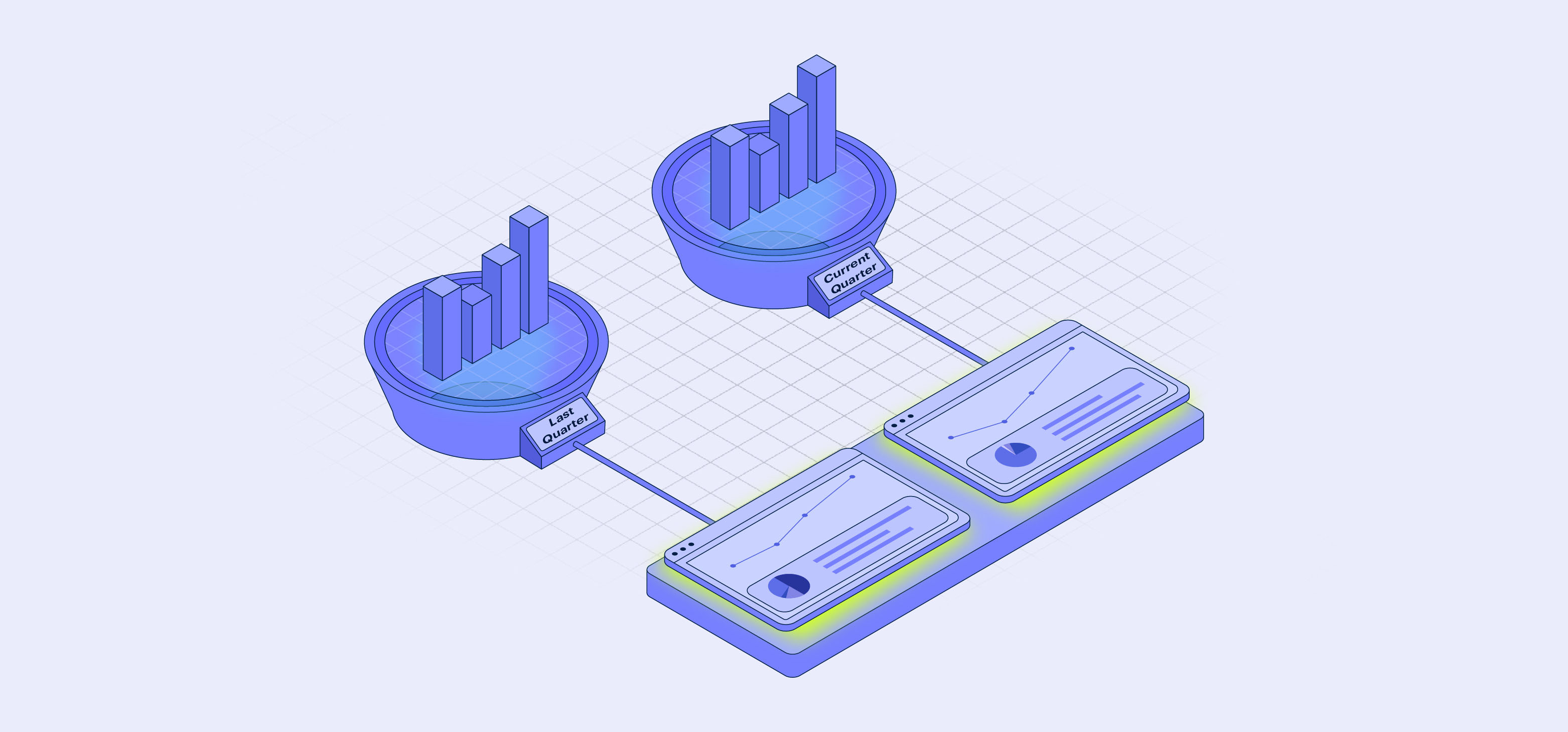Long-range planning is key to success in SaaS. It defines your company's overall trajectory and when done in conjunction with operational planning can be transformative for your business.
In this guide, we'll explain the key differences between a long-range plan and other important types of plans you create for your business and how they work together.
You'll also learn the steps required to create a long-range plan and all the elements you need to include to help your company achieve its long-term goals.
Long gone are the days when CFOs were just the ‘numbers person’. Truth be told, CFOs are among the top strategic resources for the CEO.
However, CFOs, given all the bread-and-butter tasks and the market volatility that comes with operating in a SaaS company, often get caught in short-term performance pressures, understandably, and usually at the expense of long-range planning and long-term goals. And that’s a hefty expense.
In 2020, a Harvard Law School Forum on Corporate Governance published a study that reviewed over a decade of research and revealed some rather telling numbers.
The study points out that companies whose CFOs focused on the longer term generated superior growth in revenues and economic profit when compared with others, 47% better in revenue and 81% better in economic profit. They also created more than twice as many jobs on average, outpacing others by better than 130%.
However, it goes on to add that “behaving in a way that creates long-term value can be difficult in an environment where short-term performance often receives a disproportionate share of attention”.
This only proves why long-range planning is vital for SaaS CFOs.
What is a long-range plan in SaaS?
A long-range plan in SaaS refers to a strategic roadmap designed to guide the company’s growth and evolution over an extended period, typically spanning two to five years or more.
This plan is crucial for achieving critical mission and vision statements and ensuring sustainable long-term success.
How long-range planning relates to strategic planning
While both long-range planning and strategic planning are related and responsible for the future direction of the company, they differ in their purpose.
Long-range planning is all about setting organizational goals and objectives for an organization over an extended period, typically spanning two to five years, sometimes even longer. The long-range planning process is about using current business trends to project the future and making plans based on these projections.
Strategic planning, on the other hand, is the process of deciding on the organization's direction and figuring out how to allocate the right resources, both financial and people, to pursue this strategy.
Strategic planning also requires a thorough evaluation of the strengths and weaknesses of the business and the opportunities and threats it faces (known as a SWOT analysis). To do this, internal and external factors related to competition, the technology landscape and trends, market shifts, and broader economic changes must be evaluated.
Annual operating plan (AOP) vs. a long-range plan: What’s the difference?
An annual operating plan (AOP) is a an action plan that describes the company’s annual operational objectives and the activities necessary to achieve them.
While both long-range and annual operational planning are critical, the long-range plan is intended to show how the company is set up for the next two to five years. Think of it as a trajectory of sorts.
The long-range plan doesn’t need to have the same granularity in terms of period and detail. An AOP usually describes the monthly or quarterly activities required to hit annual targets.
In contrast, the long-range plan focuses on the longer-term outlook for the company and what it needs to do at a higher level, to get there while still balancing near-term requirements.
Why you need to do long-range planning in your business
The simple answer is that annual planning alone isn’t enough. In a crowded market, it's the vision and strategic execution over the longer term that separate high-performing businesses from average ones.
To enable and empower your investors
Let’s look at a scenario that will help drive that point home. If your investors has your one-year historical performance, your current FY forecast, and the long-range plan for the next two years, they have pretty much everything they need to be well-informed and provide strategic advice. Enabling and empowering your investors to help in this way can contribute significantly to your success.
Align with your board on long-term goals
With a long-range plan, your board can also understand the trajectory of the company. While there may be a few disagreements on the short-term (one-year operational plan/forecast) numbers, when they see the long-term vision and the path you plan to take to achieve it, it’s easier for them to engage and come to a consensus.
Avoid common pitfalls in planning
Also, as an executive leader (founder/CEO/CFO), when you are continuously planning your next move with a rolling forecast model, your long-range plan can help you avoid common pitfalls because your operational model and long-range plan will work in tandem.
For example, you may have a number estimate for expenses each month in your long-range plan, but your operational model will be updated monthly. If the expenses there are showing higher or lower numbers than your long-range plan, you're able to update it accordingly.
It’s worth noting here that this exercise is very time-consuming when using spreadsheets. Drivetrain can help you do this work in a fraction of the time and without all the heavy lifting. But the main point here is that regardless of how you do it, long-range planning is something every SaaS company should implement.
Case-in-point: In our webinar on CFO Best Practices, FarEye CFO Manoj Kumar Rathi illustrated the importance of long-range planning with his own first-hand experience. Rathi said that with the efficiencies Drivetrain introduced for his finance team, he was able to use the time saved to develop the company’s first long-range plan. And it was a good thing he did…

The key takeaway here is that the kind of optics a long-range plan can provide in conjunction with your operational plan can be transformative for your business. They should not be two separate exercises, but done together, presented together and tracked and measured and updated together.
How to get started with long-term planning
Elements to include in your long-term plan
Timeline
A minimum two- to five-year projection is crucial. Keep in mind, though, that you need to have enough flexibility in your plan to adapt to rapid market and technological changes that are typical in the SaaS industry.
While doing the projection, set regular intervals for reviews and include key milestones such as product development stages, market expansion goals, customer acquisition targets, and revenue milestones, among others. And, make sure they are realistic.
Scope
Ensure that your long-range plan includes all aspects of the business, including product development, team growth, market research, customer experience, etc.
The scope of the plan should align with the company’s overall vision and mission statement. There must also be a detailed understanding and assessment of potential risks that could impact various aspects and a mitigation plan.
Frequency
Given the fast-paced nature of the SaaS market, your planning should be revisited and updated frequently – ideally on a bi-annual or annual basis – to remain relevant. It’s also prudent to define specific trigger events like major technology shifts or market conditions that would require an immediate review and update of the plan.
While coming up with your long-range plan, ensure that all relevant stakeholders are involved in the planning and updating so that you can get diverse insights.
Content
You should include detailed financial forecasts by considering various scenarios and their implications. It is good for the leadership to think about ‘futuristic’ questions, like how they aim to strike a balance between growth, innovation, and financial stability and chart the path in the plan.
KPIs
Every plan should have KPIs to give you a way to measure your performance. The more specific your KPIs are, the better.
Visibility
Make the plan easily accessible to all company members via internal communication platforms. It is wise to regularly update the company about changes or progress so everyone stays on the same page.
It's also important that the long-range plan becomes baked into the company’s culture and not just a document that new employees have to read in their onboarding.
Your long-range plan must become a vision for everyone to aspire to, integrated into daily operations and decision-making processes. And everyone must know their role in achieving the goals in the plan.
Four main steps in long-term planning
1. Compile the last two to three years of financial statements, mainly the P&L
Gather and analyze your financial statements, including your P&L statements, from the past two to three years as they provide valuable insights into the financial health and performance trends of the company. More importantly, these serve as the foundation for making accurate projections. You must particularly look for patterns in revenue growth, cost fluctuations, and profitability margins. Any anomalies might need further investigation.
2. Determine the drivers for each line item in the P&L, starting with revenue
Start by identifying the factors driving the revenue. Similarly, analyze what drives costs and expenses, such as operational costs, marketing and sales expenses, R&D, customer support costs, etc. Understanding the impact of each driver on the overall financial health helps prioritize areas for investment and cost optimization.
3. Use each line item's individual drivers to forecast their respective line items
Use the drivers identified to forecast each line item. For example, if subscription renewals are a revenue driver, factor in the renewal rates and average revenue per user (ARPU) for future revenue forecasting. You should also do scenario analysis based on various assumptions (best case, worst case, most likely, and what-ifs) to ensure the forecast is robust.
4. Check for any oddities between the actuals and forecast periods
CFOs must regularly compare the forecasted figures with actual results to check for significant variances. If there are large discrepancies, it might indicate errors in the forecast. It is vital to investigate any variances to understand their cause and course correct if necessary.
How Drivetrain makes planning on any timescale easier
With Drivetrain, you have a single source of truth for all your planning, whether long-term or AOP. It also makes planning easier in other ways, too.
Integration of diverse data sources
You can connect your revenue, sales quota, marketing, finance, and hiring plans quickly and without errors and seamlessly create your best-case, worst-case, base case and what-if scenarios.
Furthermore, Drivetrain processes data in real-time, ensuring that plans are based on the most current and relevant information.
Advanced analytics and forecasting
With a single pane view, you can see pipeline, billing, burn, ARR, and more. With this granular view, you can easily compare actuals against plans to identify which parts of your business are thriving or struggling and how they stack up against projections/expectations.
You can also get predictive alerts on potential deviations from the plan numbers and gauge their impact.
Given long-range planning involves a lot of projections, you can run multiple ‘what-if’ scenarios to assess the impact of your decisions before you make them. With Drivetrain, you can come up with accurate forecasts—five months or five years.
Collaborative and cross-functional planning
Drivetrain is flexible and is designed for collaboration, making it easier for different departments to plan together. With increased communication and collaboration, you can ensure everyone is on the same page, reducing misunderstandings and increasing alignment.











.svg)




